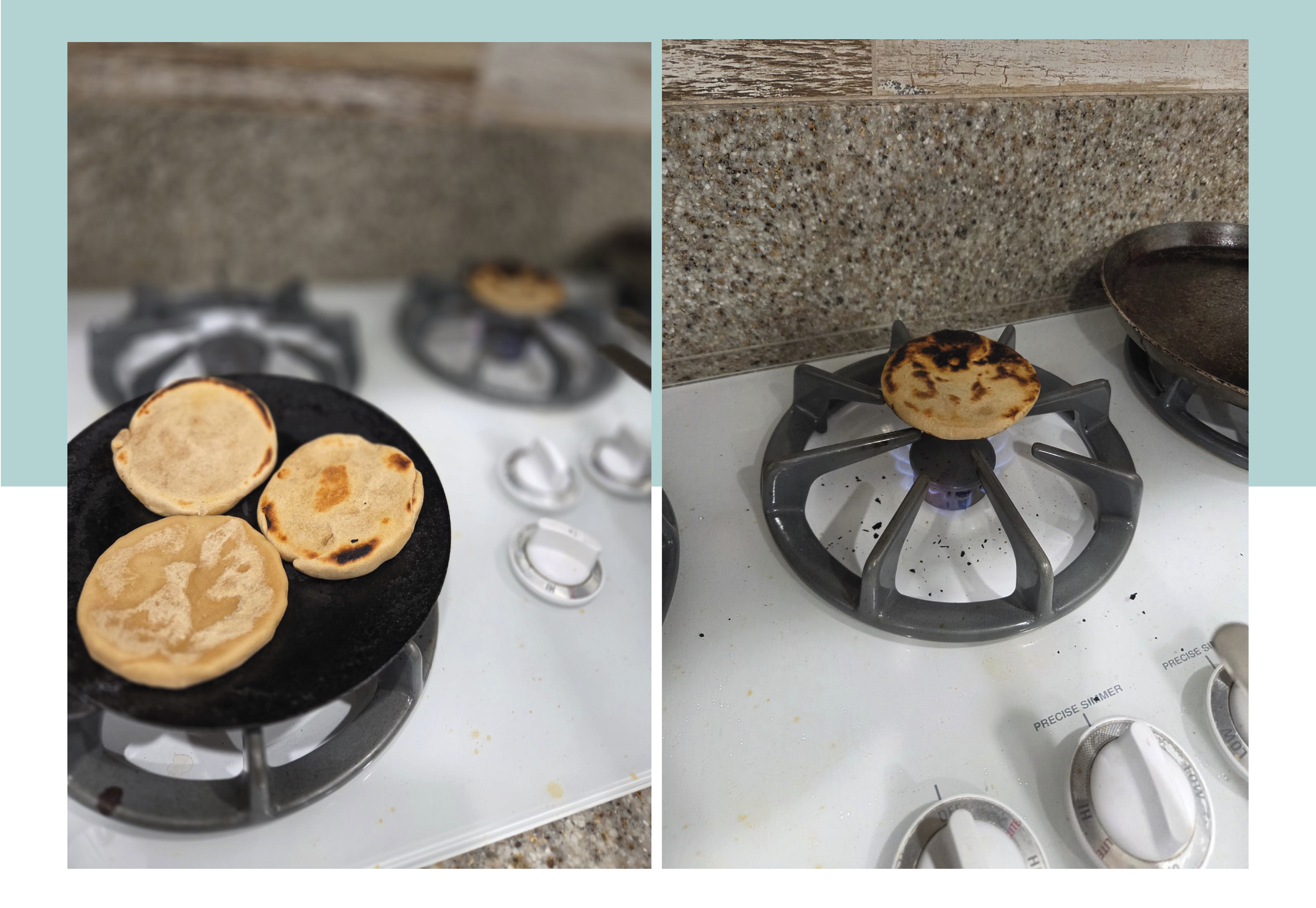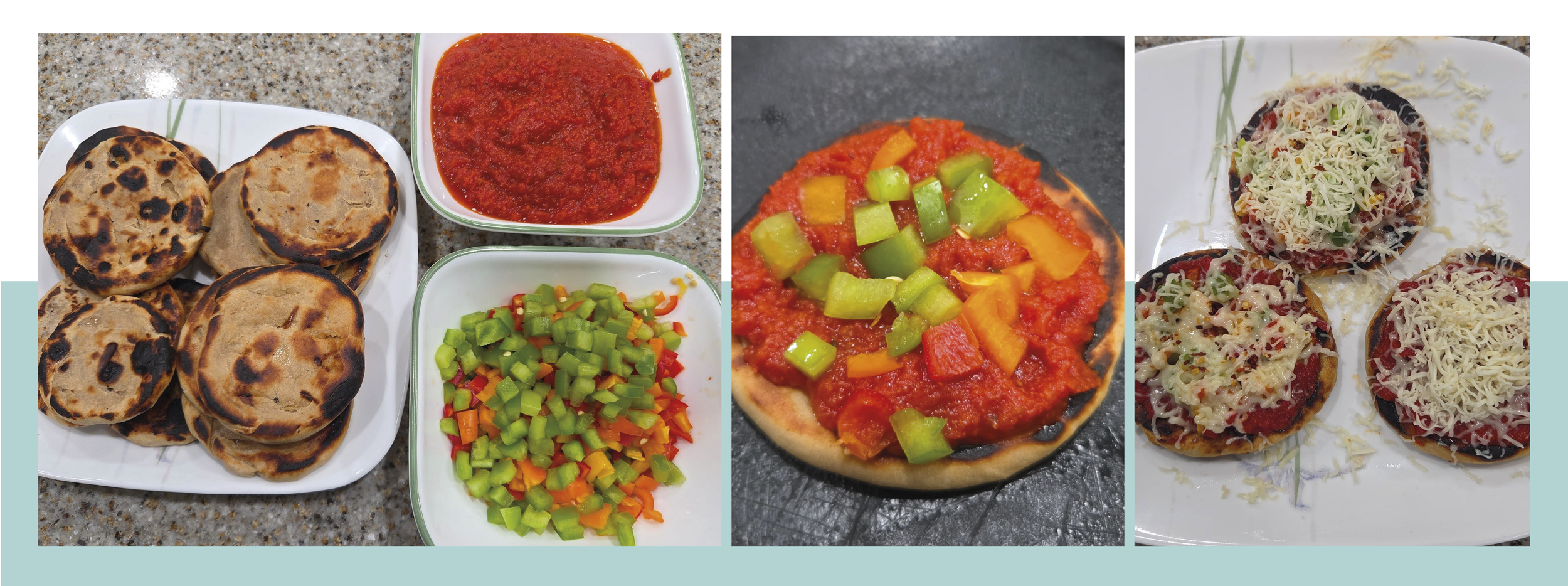How to Make Authentic Gujarati Bhakri Pizza at Home
Ingredients You Need to make Gujarati Bhakri Pizza
For the Bhakri Base
Whole Wheat Flour - 2 cups (You can use Sujata's whole wheat atta or Bob's Red Mill whole wheat flour for all-purpose use)
Salt - to taste
Peanut Oil - 2 teaspoons (Native to Gujarat, my home state in India. In the US, you can substitute with any neutral oil like avocado, sunflower, or vegetable oil)
Cream from Strauss Milk - 2-3 tablespoons (This is my favorite milk, and I don't like to waste the cream, so I add it to this bhakri recipe—it makes the dough incredibly soft and adds richness)
Warm Water - as needed
Ghee - for brushing
For the Tomato Sauce
Fresh Tomatoes - 6 medium (3 per person)
Peanut Oil - 2 tablespoons (Native to Gujarat, my home state in India. In the US, you can substitute with any neutral oil like avocado, sunflower, or vegetable oil)
Ajwain (Carom Seeds) - 1 teaspoon
Sugar - 1/2 teaspoon (To balance the natural sourness of tomatoes)
Salt - to taste
For Assembly
Bell Peppers - 1 cup, sliced (Green for traditional, or add yellow and red for variety)
Onions - 1 medium, sliced (Optional - omit for a completely sattvik meal)
Amul Cheese - 1 cup, grated (India's beloved cooperative cheese brand, established in 1946 in Gujarat. Known for its authentic taste and quality, Amul cheese has the perfect melt and mild flavor that complements Indian dishes beautifully. Available at most Indian stores)
Method of Preparation
Preparing the Bhakri Dough
Make the dough: In a large bowl, combine 2 cups of whole wheat flour and salt. Add 2 teaspoons of peanut oil and the cream from Strauss milk. Using your hands, knead the mixture, gradually adding warm water as needed to form a soft, pliable dough.
Rest: Cover the dough and let it rest for 30 minutes. This allows the gluten to relax and makes rolling easier.Natural Fermentation: While this recipe doesn't use commercial yeast, the 30-minute resting period allows wild yeasts and beneficial bacteria naturally present in flour to begin mild fermentation. The cream from milk contains natural lactobacilli that contribute to this process. Even this brief fermentation begins breaking down phytic acid, improving mineral absorption and making the bhakri more digestible and nutritious—just as traditional Indian breads have been made for centuries.
Making the Tomato Sauce
Crush Tomatoes: In a Vitamix, crush 6 tomatoes at setting 1—they should be broken down but not completely smooth, maintaining some texture.
Cook the Sauce: Heat peanut oil in a saucepan over medium heat. Add 1 teaspoon of ajwain seeds and let them sizzle. Ajwain Benefits: These powerful seeds aid digestion, reduce bloating, and have antimicrobial properties. They're especially beneficial for balancing Vata dosha and supporting agni (digestive fire). Interestingly, ajwain has a similar earthy, slightly bitter taste to oregano, making it a perfect bridge between traditional Indian flavors and Italian-inspired dishes.
Simmer: Add the crushed tomatoes, salt, and sugar to taste. Stir occasionally and cook for about 30 minutes. The goal is to remove all water content until you achieve a rich, thick consistency that coats the back of a spoon without being watery.
Preparing the Bhakri
Shape: Divide the rested dough into portions and roll each into thick rounds (thicker than regular roti).
Cook: Heat an iron roti pan over medium-high heat. Cook the bhakri on both sides until golden spots appear.
Puff: Using tongs, place the bhakri directly over the gas flame. It will puff up like a balloon, ensuring even cooking on both sides.
Finish: Once puffed and cooked through, brush immediately with ghee while still warm.
Assembly
Preheat: Preheat your oven to 400°F.
Layer: Spread the rich tomato sauce evenly over each bhakri. Top with sliced bell peppers and onions (if using).
Bake: Place in the preheated oven for 10-15 minutes until the vegetables are tender and the base is crispy.
Cheese: Remove from the oven and immediately sprinkle grated Amul cheese over the hot bhakri pizza. The residual heat will melt the cheese perfectly.
Serving Suggestion
Serve immediately while the cheese is melty and the bhakri is crispy. This makes a complete meal that satisfies all six tastes according to Ayurveda.
Cut into wedges like traditional pizza or enjoy whole—both ways honor the rustic, homestyle nature of this dish.
"True nourishment delights all the senses—sight, smell, taste, touch, and sound."
Why This Is Ayurvedic
This Gujarati Bhakri Pizza beautifully bridges ancient wisdom with modern tastes:
Whole Wheat Flour: Provides complex carbohydrates and fiber, supporting steady energy release
Peanut Oil: A regional oil that's naturally suited to Gujarati constitution and climate
Ajwain: Powerful digestive aid that prevents the heaviness often associated with cheese
Fresh Tomatoes: Provide natural acidity that aids in digestion and balances the richness
Ghee: Enhances nutrient absorption and kindles digestive fire
Regional Ingredients: Using native ingredients like peanut oil and traditional techniques honors the principle of eating according to your environment
Occasional Indulgence with Wisdom
While this dish contains cheese and is richer than everyday sattvik meals, it can be enjoyed occasionally because:
Balanced Preparation: The ajwain and tomatoes aid in digesting the heavier elements
Mindful Portions: The thick bhakri base provides satiety with smaller portions
Quality Ingredients: Using whole wheat, fresh vegetables, and good-quality dairy makes it nutritious
Digestive Support: The spices and cooking methods support healthy digestion
Enjoy this fusion of tradition and innovation—a testament to how ancient wisdom can adapt to modern life while maintaining its essential goodness.





